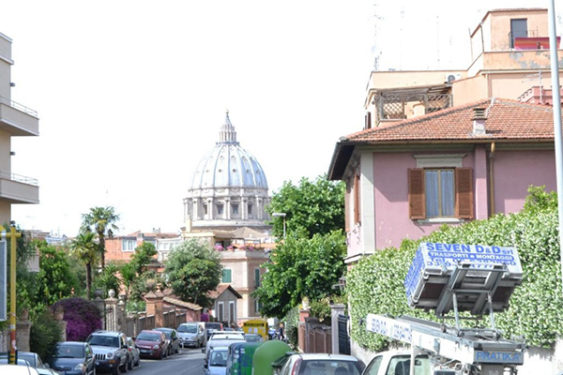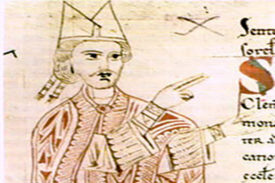
By John L. Allen
ROME (Crux) – Back in the day, when St. John Paul II would meet with seminarians in the Eternal City each year, he would challenge them to “imparare Roma.” It’s a phrase that technically violates the rules of Italian grammar, but everyone knew what he meant: “Learn Rome!”
The idea was that Rome is like an encyclopedia of Catholic history in stone and cement, and if you just move around the city and pay attention, you’ll get an education in the Church that’s simply not available anywhere else on earth.
This year, in the dog days of summer when relatively little of news interest is happening in the Vatican, I’ve decided to take St. John Paul’s injunction to heart and get to know my own Roman neighborhood. My experience triumphantly confirms the late pontiff’s point, because I’ve learned things about the Church that I never knew despite more than two decades of experience as an alleged vaticanista, or expert on the Vatican.
As a case in point, I recently became aware of a restaurant in my neighborhood I hadn’t yet tried, located off a side street. It’s only about 10 minutes away by foot, and to get there one has to descend a winding hilly street called the Via Monte del Gallo, then cross the Via Gregorio VII, head down the Via Cardinale Silj, and wind up on the Via del Cottolengo.
Let me briefly unpack the meaning of each of those names.
Monte del Gallo is actually the name of my neighborhood. You’d think it means “Rooster Hill,” but in this instance gallo means “Gaul,” as in, a Frenchman. It’s a reference to Charles III, Duke of Bourbon, who led the infamous 1527 Sack of Rome on behalf of the Holy Roman Empire and set up his camp here, thus the name: “The Gaul’s Hill.”
That battle, by the way, is remembered as the only time the Swiss Guard saw real combat. Some 189 Swiss Guards fought tenaciously against thousands of largely Spanish attackers, and, although only 42 survived, they managed to buy enough time for Pope Clement VII to escape to safety.
In the end, Charles of Bourbon himself was killed by a canon shot fired from the papal stronghold of Castel Sant’Angelo, which I like to think of as a cautionary tale: “Don’t mess with our ’hood.”

As for the Via Gregorio VII, it speaks for itself. It’s named for Pope Gregory VII, the great reforming pontiff of the 11th century who set an all-time precedent for the independence and sovereignty of the papacy in the Investiture Controversy with the Holy Roman Emperor Henry IV. Gregory also rigorously attacked simony, meaning the selling of Church offices for money, and defended clerical celibacy.
(I cannot help noting the irony that in October during the Synod for the Amazon, several of the prelates likely to make a push for the ordination of married men will likely be dining on a street named for one of the greatest champions of clerical celibacy.)
The Via Cardinale Silj is named for Cardinal Augusto Silj, who was the Prefect of the Apostolic Signatura, the Vatican tribunal that deals with matters of the internal forum (meaning requests for grace that can’t be handled in a normal judicial process) from 1920 until his death in 1926. Silj was the cousin of Cardinal Pietro Gasparri, the Vatican Secretary of State who negotiated the Lateran Pacts with Mussolini, effectively marking the end of the “Roman Question” and the papacy’s belated acceptance of church/state separation.
Finally, the Via del Cottolengo is named for a church found there dedicated to St. Giuseppe Cottolengo, a 19th century Italian priest who was born and grew up in the shadow of the industrial city of Turin and went on to found a number of social works devoted to the care of people with extreme disabilities who couldn’t find help anywhere else, caught between the deficiencies of the state and the gaps in the social safety net bred by a new capitalist economy.
To sum up, just paying attention to street names in my Roman neighborhood along a 10-minute walk to a restaurant captures four different moments in what might be thought of as the Church’s relationship with the secular world: the Medieval debate over investiture, the Renaissance conflict between the papacy and secular authorities that led to the Sack of Rome, the Lateran Pacts and the development of modern Catholic social teaching and action.
Take the same approach and apply it virtually anywhere in this town, and the results will be similarly edifying. That’s what St. John Paul II meant by imparare Roma, and the lesson has lost none of its punch.
